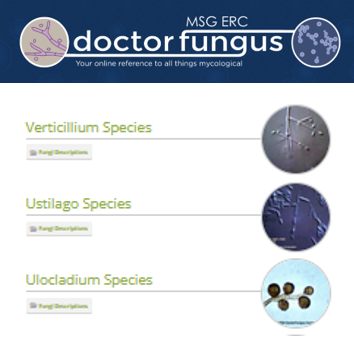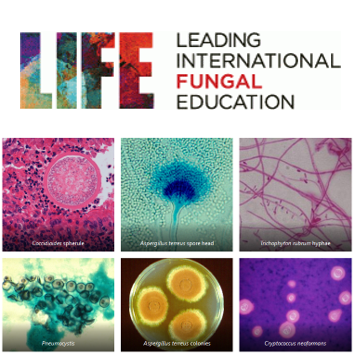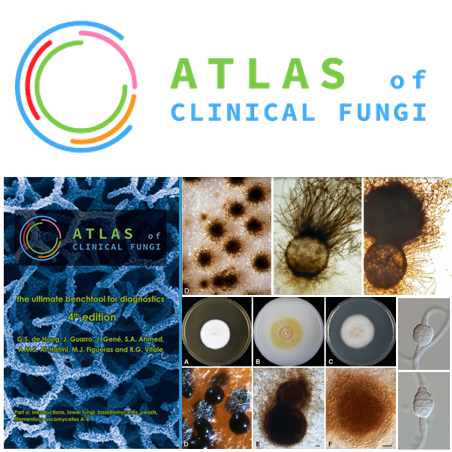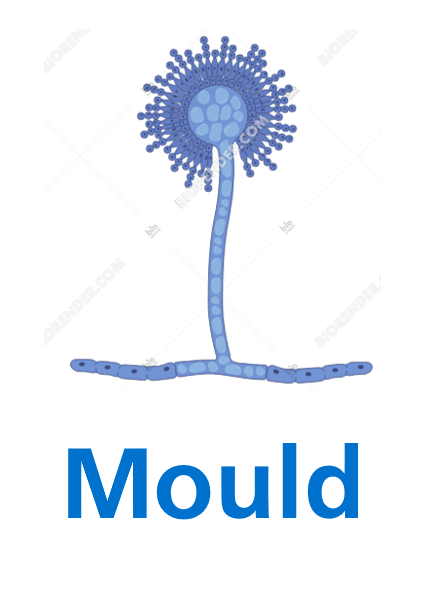

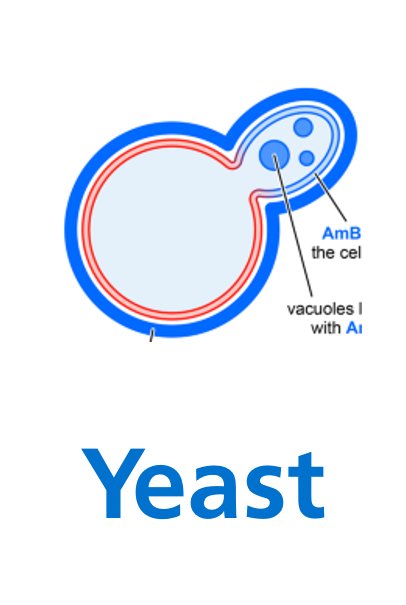
More species will appear in this section as new case studies are added to the site
The most common fungal pathogens are Candida and Aspergillus
Filamentous fungi (moulds) are often trickier to identify because they are slow-growing and less represented in MALDI-ToF libraries.
Aspergillus
Aspergillus spores (conidia) enter the lungs continuously as they are ubiquitous in the environment, particularly in rotting vegetation. They are small enough to penetrate deep into the lungs, but are normally cleared by alveolar macrophages, neutrophils or lung epithelium in healthy individuals. Asymptomatic colonisation of the lungs is common in people with impaired mucociliary clearance (e.g. CF or bronchiectasis).
However, they can cause a wide variety of infections in susceptible individuals, ranging from superficial nail infections through to life-threatening invasive lung infections. Serious infections are generally associated with an immune deficiency or pre-existing structural damage to the lungs. These spores are also allergenic and are a common asthma trigger. Asthma patients may become sensitized over time (SAFS) or develop a severe chronic allergic reaction (ABPA).
Diagnostics

| MICROSCOPY: Gram stain, India ink or 10-30% KOH, with or without fluorescence (e.g. Calcofluor white) |
| HISTOPATHOLOGY: stain with H&E, PAS or GMS to reveal fungal elements |
| CULTURE: grow on Sabouraud agar (SAB) at 30˚C for 3 days. Colonies typically appear powdery (due to spores) and flat. Colours may be affected by additives such as yeast extract |
| ANTIGEN TESTS: beta-D-glucan & galactomannan |
| ANTIBODY TESTS: Aspergillus-specific IgE & IgG (precipitins test may be offered by some labs) |
| MOLECULAR: PCR tests for Aspergillus fumigatus are available from reference laboratories, which will cross-react with other Aspergillus spp. and occasionally with related moulds such as Penicillium |
Common species
There are >185 species of Aspergillus but only around 20 are known to cause disease in humans as opportunistic pathogens. The 6 most common are summarised below, or you can find more other species at Dr Fungus. For a more detailed description of Aspergillus phylogenetics please refer to Samson et al (2014)
| fumigatus | flavus | niger | terreus | nidulans | versicolor | |
| Frequency | Very common | Common | Common | Less common | Less common | Uncommon |
| Sites of infection | Lungs; sinuses; nails | Ears; burns | Nails | |||
| Other | PCR test available | Produces aflatoxin | AmB intrinsic | Hülle cells | ||
|
Colony size SAB 30°C, 7 days |
< 50mm | < 60mm | < 60mm | < 40mm | < 30mm | < 20mm |
|
Colonies SAB 30°C, 3 days |
 |
 |
 |
 |
 |
 |
| Spore head |  |
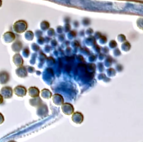 |
 |
 |
 |
 |

